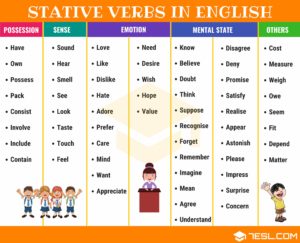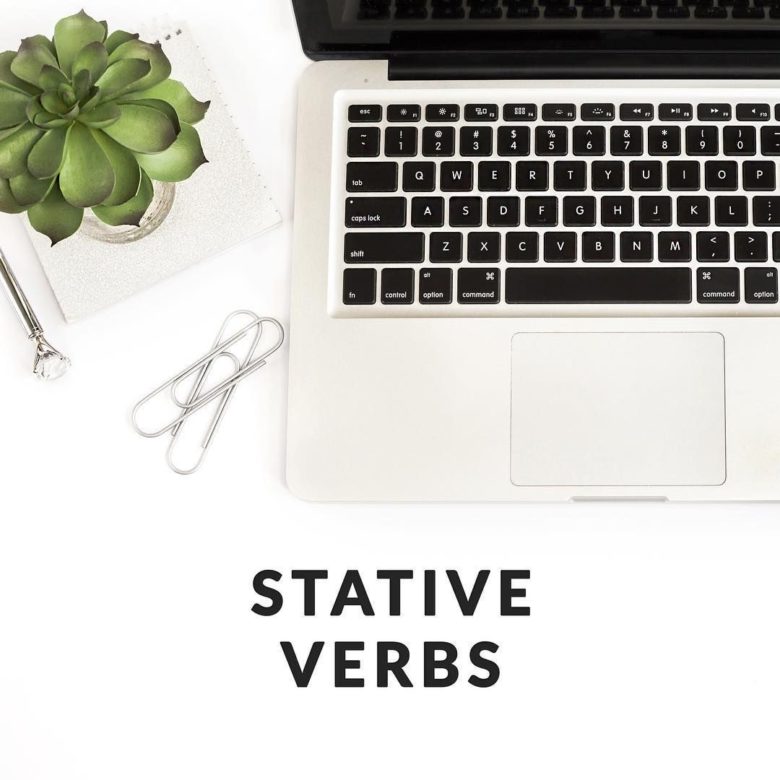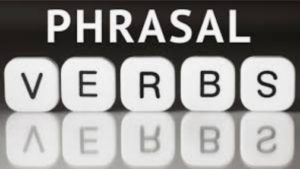Sometimes in the English language, it is important to express feelings, emotions, thoughts, and even senses. This is where stative verbs come into play in the English language. Without these verbs, the way we write and communicate would be lacking vital information and would not come across in a way that describes very important states of being that are trying to be conveyed.
Stative Verbs
Stative verbs or non-continuous verbs or also commonly referred to as state verbs are verbs that describe the state of being or more simply put, how a certain thing feel, is, or may appear to be. Unlike action verbs or, commonly called dynamic verbs that describe actions which we will get into a little later in this article. As discussed in the English tenses, these verbs are not used in the continuous tense being that they do not describe an action as mentioned.
There are four types of stative verbs that range from expressing senses, emotions, being, and possession. We will cover each type and how and when to use them in this article. We will also cover the many verbs from the stative verbs list to help identify these states of being verbs a little better.
As with any other part in the English language, there are exceptions to the rules when it comes to stative verbs and dynamic verbs. Also, some of these verbs can be interchangeable in each of the four categories depending on the context and how they are being used which will become apparent as we cover these verbs, but for now, let’s take a look at the four types of non-continuous verbs.
Sense or Perception Verbs
Also known as opinion verbs by some, sensing verbs, when it comes to stative verbs refers to the senses, or simply put, what our senses register. For example, what we hear, smell, taste, see and feel.
Sensing verbs can also consist of verbs which describe perceptions or opinions. Some common words for this verb type from the stative verbs list are; seem, appear, believe, know, recognize, understand, resemble, prefer, agree, disagree, suppose, approve, disapprove, and suspect. Let’s look at a few examples:
- I can hear the plane approaching.
- She appears to be ok.
- He seemed upset after the talk with his boss.
As you can see in the above examples, each refers to either one of the five senses as seen in example one or expresses an opinion or perception as seen in examples two and three.
Emotion or Thought Verbs
Stative verbs can also describe emotions, thoughts, or feelings. This verb type expresses more of the mental state of what is trying to be conveyed through writing or dialogue.
Some common words from this category of the stative verbs list include; adore, enjoy, forget, need, doubt, love, hate, want, desire, need, and think. Let’s take a look at a few examples:
- I think he will need to wait for the next train.
- She adores the newly rescued kitten.
- He would love to hear the good news.
As you can see from the above examples, each sentence describes a thought as seen in example one or emotion of some kind as seen in example two and three.
Being or Quality Verbs
Be, is, are, weigh, contain, involve, exist, depend, deserve, cost, are just a few words from the stative verbs list that are considered as stative states of being or quality verbs. This category of stative verbs describes exactly what the title states, the states of being or the quality of something. For example:
- This box contains two left shoes.
- He is going to the club later tonight.
- The new cost will depend on how sales go today.
As you can see from the first example, the status or the quality of the box of shoes is less than acceptable unless the buyer has two left feet. In example two, the subjects state of being shows that he will be going to the club later tonight, and in the last example, the state of the cost will depend on how sales go.
Possession Verbs
Stative verbs that refer to having something or possessing something describes the last category of this verb type. Some common possession verbs are, have, owe, include, belong, possess, and want. Let’s take a look at a few examples:
- The baby in the window belongs to the mother in room 316.
- She owns the shop at the intersection of 4th and 5th.
- Timmy has the exact jacket as the model from the runway.
In the first example, the verb belongs refers to the baby being in the care of the mother in room 316, or the mother having guardianship over the baby.
In example two, the verb owns shows that she has legal possession of the shop at the intersection of 4th and 5th.
In example three, the verb has shows that Timmy at least for now permanently holds the same jacket as the model from the runway. As you can see from each example from this category, the verbs indicate possession.
Stative Verbs and Dynamic Verbs Together
Be, have, see, look, smell, taste, think, feel, weigh, measure. All of these verbs can be used as both dynamic verbs (continuous) and stative verbs (non-continuous). As stated, the English language is full of tricks, and sometimes there are exceptions to the rules.
Depending on the context of how some verbs are used, their use in different categories will be maximized. Simply put, depending on how any of the above common stative verbs are being used, it could also land them in the action verb category. Let’s dig a little deeper with some examples.
Be: Stative vs. Action
- Stative: She is hateful. (The stative form shows that she is always in a state of being hateful.)
- Action: She is being hateful. (The dynamic form shows that she is showing an action of only being hateful at the moment.)
Have: Stative vs. Action
- Stative: I have a new house. (The stative form shows that I am in possession of a new house.)
- Action: I am having a good time. (The dynamic form shows that I am in the action of experiencing a good time.)
See: Stative vs. Action
- Stative: I see the light coming through the rocks. (The stative forms refers to my perception of what I see coming through the rocks.)
- Action: She will be seeing the hiring manager tomorrow. (The dynamic form shows the action of meeting the hiring manager.)
Look: Stative vs. Action
- Stative: That car looks suspicious. (The stative form shows that the appearance of the car looks suspicious.)
- Action: He is also looking at the suspicious car. (The dynamic form shows the action of his eyes looking at the suspicious car.)
Smell/Taste: Stative vs. Action
- Stative Smell: That river smells like sulfur.
- Stative Taste: The chicken taste like it was cooked in fish grease.
In the stative form, the verbs smell and taste refers to the state of something that smells or taste a specific way.
- Action: He is smelling the river sample.
- Action: The chef is tasting the chicken to see if the grease needs to be changed.
In the dynamic form, the verbs smell and taste refers to the action of someone or something using their nose or mouth to smell or taste something.
Think/Feel: Stative vs. Action
- Stative: I think the banner should be higher.
- Stative: I feel like that is a dead end road.
The stative form of the above examples expresses the opinion of something.
- Action: He is thinking of speaking to the new neighbors.
- Action: He has been feeling lightheaded all day.
The dynamic form of the verb think in the above example shows the action of someone using their power of thought. Whereas; in the second example, the verb feel shows the action of experiencing a health condition. One can also experience emotion with this verb, for example, I am feeling sad today.
Weigh/Measure: Stative vs. Action
- Stative: The baby weighs 15lbs.
- Stative: The box measures 9 inches X 12 inches.
The stative form of the verbs in the above examples shows the status of something. The status of the baby’s weight is 15lbs, and the status of the box after measuring it is 9 inches X 12 inches.
- Action: The nurse is weighing the baby.
- Action: The UPS representative was measuring the box for us.
The dynamic form describes the subject performing an action of weighing in the first example and measuring in the second.
Stative Verbs List

***REMEMBER! DO NOT USE STATIVE VERBS IN THE CONTINUOUS TENSE!***


